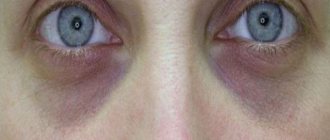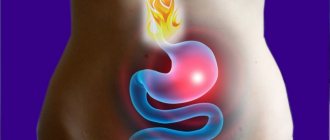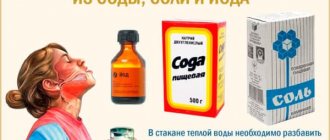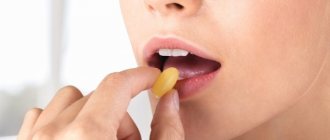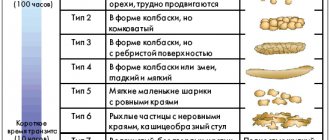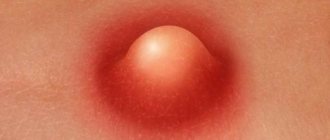Reduce the temperature with medicines and folk remedies.
Fever occurs as a result of the fight against infection and inflammatory processes in the human body. Quite often we do not take this symptom into account until the mark becomes critical. After all, many diseases occur without any visible deterioration in well-being, and even an adult does not always feel an elevated temperature. However, before starting treatment and making an appointment with a doctor, it is necessary to give strength and energy to the body to resist the disease.
Most of us prefer to give up medications, using only traditional methods or drinking plenty of fluids. But, like any treatment, therapy must be comprehensive and include not only the recipes of traditional healers, but also the full power of pharmacological drugs to achieve maximum effect. Well, let's figure out what temperature is dangerous for the human body and what to do with it.
Is it always necessary to lower the temperature?
With hyperthermia, metabolism accelerates, which leads to increased destruction of harmful microorganisms. According to many doctors, nothing needs to be done until 38 OC. This does not apply to children, people with chronic pathologies, heart disease and nervous system. In addition, much depends on individual characteristics.
I don’t like to swallow pills; I prefer to bring down the temperature without resorting to medications . At 38-39 oC I’m no longer good.
I just can’t stand anything above 37.5, so I try not to get it to that level.
Applying ice
To reduce the temperature, ice is split into small pieces, placed in a plastic bag and applied to the projection sites of large vessels: the forehead, axillary areas, inguinal folds, popliteal fossae. To protect the patient from hypothermia, a folded cotton towel should be placed between the skin and the ice. It is better not to continue applying ice for more than 5-7 minutes; after a quarter of an hour the procedure can be repeated.
Source: depositphotos.com
How to bring down a high temperature at home quickly and safely?
Homemade antipyretics work no worse than pharmaceutical ones. They do not harm the stomach and have no side effects. The choice of method should be selective and common sense used. The main principle that you should never forget is to do no harm.
If you have the slightest doubt, consult a doctor. Folk remedies for fever are not recommended for everyone, and they are not that safe. What is written below is the result of personal experience and observations; I do not encourage this to be taken as the basis for treatment.
Raspberry drink
I believe that this is the most effective antipyretic. Any raspberry will do: fresh, frozen, pureed with sugar, in the form of jam or compote. The main thing is that the drink is not hot, otherwise it will not be possible to reduce the high temperature.
Raspberries are a proven remedy for fever
The berries contain organic acids, not least of which is salicylic acid. It stops the inflammatory process and has a diaphoretic effect. This is an analogue of aspirin. Unlike the pharmaceutical one, it does not harm the gastric mucosa. If there are no berries, leaves, young shoots, fresh or dried are suitable.
Cranberry juice
Cranberries, like raspberries, have anti-inflammatory and antimicrobial effects. A vitamin drink made from it is a proven vitamin, antipyretic and diaphoretic remedy. Cranberry juice perfectly tones, protects against germs and helps reduce fever without medication in a short time.
According to the rules, you need to squeeze out the juice, then boil the cake, cool it and combine it with the juice. I do it simpler: pour the berries into a pan of water and bring to a boil. Perhaps some of the ascorbic acid is lost in this process, but we are not doing this for the sake of it.
Dried fruits compote
Compote should not be rich or too sweet
Dried apricots, raisins, prunes and dates are rich in salicylic acid salts. The patient usually has no appetite, so cook compote. It will normalize the water-salt balance, help avoid dehydration, and bring down the temperature without pills.
Fruits and vegetables
There are a lot of salicylates in strawberries, oranges, currants, bananas, and red grapes. These substances are found in tomatoes, cucumbers and bell peppers. Eating fresh foods will strengthen your strength and normalize thermoregulation.
Honey water
Honey with water will give you strength and prevent dehydration.
Honey is a popular product from the arsenal of traditional medicine. Even doctors recommend it as a diaphoretic. It enhances detoxification and speeds up recovery. It is consumed separately, with tea or in the form of a solution - honey water.
Antipyretic herbs - recipes
Herbs are an excellent antipyretic. They often lower even critical temperatures and are more effective than medications:
- Black elderberry (flowers) 1 tablespoon, pour 200 milliliters of boiling water, leave. Drink this decoction 0.5 cups three times a day.
- Small cornflower, 1 teaspoon, pour 200 milliliters of boiling water and leave. Drink 0.5 cups 4 times a day.
- Blueberries, whether fresh or processed, should be eaten. These berries quickly and easily relieve fever and chills.
- Willow (bark) 15 grams, pour 200 milliliters of boiling water, cook for 5 minutes, and then leave for 2 hours. Take 1 tablespoon of the decoction no more than three times a day.
- Swamp cranberry. These berries are not just an antipyretic, but also refreshing, tonic, and improve physical and mental performance.
- Cordifolia linden (flowers) 2 tablespoons, pour 200 milliliters of boiling water, let it boil for 5 minutes. Drink the infusion hot several times a day after meals, a glass.
- Ordinary raspberries are brewed as a tea drink and drunk.
- Pour 3 teaspoons of ordinary coltsfoot (leaves) into a glass with hot water and leave for 3 hours. Then strain the broth and drink 0.5 cups warm before meals. No more than three times.
- Seed parsnips (dried grass) 1 tablespoon, pour 200 milliliters of boiling water, leave for three hours. Drink 0.5 glasses 30 minutes before meals.
- Large plantain, 2 tablespoons, pour 200 milliliters of hot water, cook for five minutes. Drink a decoction of 0.5 cups 4 times a day before meals.
willow bark
You can buy it at the pharmacy. The bark is a natural source of salicylic acid. It was from it that this chemical compound was isolated for the first time. I didn’t use it to reduce the temperature, just in case, let’s take note.
Linden blossom
Linden flower tea is a proven way to fight colds over generations. It is as effective as raspberries. A big plus is that linden not only relieves fever, but also prevents complications. Tea has an expectorant and antimicrobial effect, removes toxins, and strengthens the immune system.
Cool bath
Many sources recommend taking a bath to bring down a high temperature. Some recommend warm, others – cold. Such advice is highly questionable. I don’t even risk taking a shower when I’m sick, so as not to get too cold. Heat causes the fever to increase even more. I experienced this firsthand.
If you want, experiment, but I can hardly imagine a person lying in a cool bath at a high temperature. And you?
Rubdowns
Vinegar and vodka rubdowns (not rubbing!) are widely known and have been used in folk medicine for a long time. For 0.5 liters of water take a tablespoon of vinegar. Wipe your forehead, arms and legs with a cool solution. It is believed that as the liquid evaporates, it cools the body.
A napkin is moistened in a weak solution of vinegar and placed on the forehead.
To be honest, I have never been able to reduce my readings by more than half a degree using this technique. This is completely inconsistent with the effort expended, and I abandoned this method.
Such manipulations should not be performed on children to avoid intoxication. In addition, the advice to wrap the patient in a wet sheet and wait until his body cools down travels from publication to publication. I want to the authors: “Have you tried this yourself?” Lying in a wet sheet when you want to cover yourself with three blankets is beyond my understanding. So let's cross it out.
Compresses
A method designed for extreme sports enthusiasts is an ice compress. Cold can cause vasospasm, headache, and hypothermia. It is much safer to place a damp cloth on your forehead. As the liquid evaporates, it will absorb heat and cool slightly. The method, according to my observations, is weak, and it’s unlikely to be possible without drugs. The most it does is slightly relieve discomfort. I use it sometimes, just take a decoction of mint or chamomile.
Rubdown
To reduce the patient’s temperature, moisten a sponge or towel in cool water, wring it out and carefully wipe the torso, face, and limbs. Droplets of liquid remaining on the skin are allowed to dry on their own. To enhance the effect, add a few drops of table vinegar or vodka to the water in a 1:1 ratio. It is better to wipe children with water at room temperature (otherwise the procedure may provoke shock and febrile convulsions caused by vasospasm).
The procedure of wiping with water, even water at room temperature, has the effect of reducing fever by 1-2 degrees within 1-1.5 hours.
Source: depositphotos.com
How to bring down a child's temperature to 40 at home?
This question is sometimes asked by young parents who are concerned about the health of their child. I will answer: this is a life-threatening condition, call an ambulance immediately! Extreme numbers on the thermometer indicate the development of a serious illness in the child; there is no time for experimentation. The situation may be complicated by seizures and other dangerous things. Don't wait for this to happen.
A friend of mine calls an ambulance for her son when the thermometer shows above 38 oC. She has never been refused, although, in my opinion, this is too much. And at 40 you can’t hesitate for a minute!
If hyperthermia appears, it means that the immune system is fighting inflammation. Whether to knock it down or not depends on how you feel, concomitant diseases, and thermometer readings. In case of minor deviations, it is better not to rush, but to give the body the opportunity to overcome the disease on its own. By lowering the temperature, you will not get rid of the disease, but only muffle the symptoms.
Reducing your temperature without medication is not so difficult, especially when you realize all the benefits. The main advantage of drug-free methods is the absence of side effects and stress on internal organs.
Cool enema
An antipyretic enema is an unpleasant procedure that is recommended if all other methods of reducing the temperature are unacceptable or have not produced tangible results. For these purposes, use warm water, usually 2 degrees lower than the current body temperature, with salt (at the rate of ½ tsp per 100 ml of water). The amount of liquid for an enema depends on the age of the patient:
- 1 year – 120 ml;
- 2 years – 200 ml;
- 5 years – 500 ml;
- over 10 years – 1 l.
All of the above physical methods of reducing body temperature (rubbing, applying ice, enema) are contraindicated for children under one year of age, especially those with a tendency to seizures or heart defects. In addition, these procedures should not be used in case of cold hyperthermia (chills, icy extremities, bluish skin color) - in this case they will only aggravate the patient’s condition.
Source: depositphotos.com
